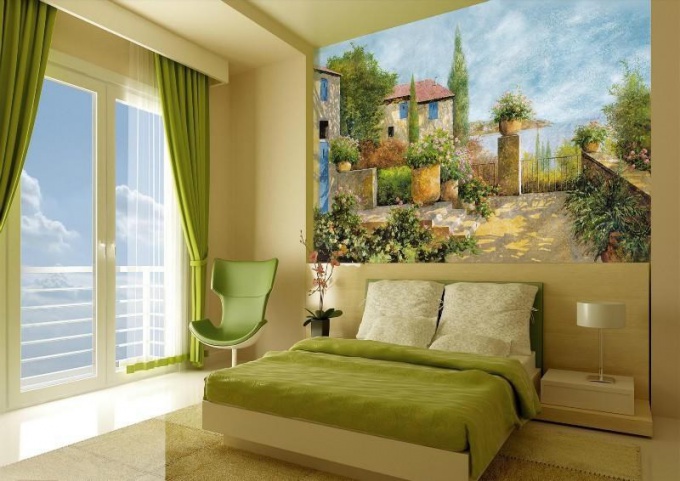Painting on dry plaster: how it's done
Painting on dry plaster: how it's done
For decoration of modern premises oftenwall painting is applied. Drawing a picture on dry plaster is a process that can be done at home. Only first you need to master the technique of painting on dry plaster.

How to choose a paint for painting on dry plaster?
The popularity of wall paintings in living quartersgrows every year. There are two main methods of drawing on the surface - painting on dry and moist plaster. The second method is much more complicated. Therefore, in practice, more often a pattern is applied to dry plaster. Typically, for such artwork, oil, lime and wax paints having a wax base are used. The most modern dyes are materials created on the basis of casein-oil emulsion. And you can choose matte, glossy or acrylic colors. They dry very quickly and then form a super-strong layer. Such a protective coating is moisture resistant and neutralizes the effect of ultraviolet radiation. There are even special compounds that mimic cracking or glow in the dark. Technique of painting on dry plaster
Before directly drawing the drawing on theDry plaster you will need to create a sketch. To create it, decide on the scale of the composition, draw it on paper and break it into squares. This should be done to facilitate the process of transferring the drawing to the wall. Then, as much as possible, level the surface of the wall. To do this, you need to remove traces of whitewash and wipe all the irregularities. Be sure to do the priming using lime dough and casein glue. The composition for the primer depends on the variety of the chosen paint. By the way primed the surface in three stages. Do not forget to dry it after every step. After that, break the "canvas" into squares. The layout can be painted with charcoal or pasted with paint tape on special labels. Transfer the starting points to the wall, if there are many large elements in the drawing. This will require a large ruler. Now carefully draw the outlines of the composition with sepia or drawing charcoal. Perhaps, in the process of working, the image will have to be corrected several times, to make it harmonious and proportional. After the completion of this step, you can proceed to working with color. Try first to use dark tones, and to light ones to move closer to completing work. Drawing is better to start from the periphery and gradually move to the central part of the composition. The final stage should be to cover the resulting pattern with varnish.








